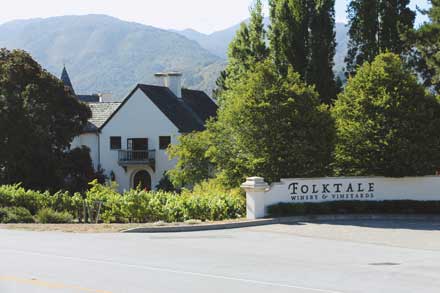Wine Industry Finance
How Wineries Use SBA Loans

Finding the capital for expansion can be tough for smaller wineries, vineyards and wine-related businesses. Despite the wine industry’s recovery back to pre-recession profitability, many banks shy away from complex, cyclical, commodity-driven businesses like wine.
“Unless they have wine industry expertise and play regularly in that niche, banks tend to be wary of the risk and are either unwilling to loan or require a hefty down payment,” explained Rich Grant, executive vice president at TMC Financing, a non-profit, mission-based lender specializing in U.S. Small Business Administration 504 loans.
“The real benefit of the SBA 504 program is the low down payment,” Grant said. “For wineries and vineyards, the SBA requires 15% down; for other facilities like a tasting room or kitchen or wine-related businesses, the minimum down payment can be as low as 10%.”
Conventional financing, meanwhile, can require a down payment of 35%—or even 50%. “On a multi-million dollar loan, that can be a big difference in capital available for other things, like staff salaries or marketing,” Grant said.
Greg Ahn, founder of Alcohol by Volume, a portfolio wine company ranked No. 251 on the Inc. 5000 list of the fastest growing private U.S. companies, leveraged the SBA 504 program to acquire a vineyard, winery, bottling plant, residences, land and equipment in Carmel Valley, Calif.
“It was a natural extension of our existing wine business,” Ahn said. “Having the winery, vineyard, event venue and tasting room is a key piece of our business growth strategy. Direct to consumer is the fastest growing channel in the industry. We’ll get to educate and interact with our customers in a way we don’t get to now.”
The winery will be the new home for the Le Mistral label, founded by Joseph Phelps, and will launch the Folktale label with a 2013 vintage Monterey County Chardonnay and Monterey County Pinot Noir. A Talking Animals sub-brand launch is planned for next spring. “Folktale is inspired by the idea that the story is what sells wine,” Ahn said. “Getting to tell that story will change the way we do business.”
“We see growers who have traditionally produced grapes to fill bulk contracts seek to add value to their business by creating a winery component,” Grant said. “Direct to consumer is a way to control their own destiny, and owning their facilities and equipment controls occupancy costs.”
An SBA 504 loan can be used to buy, build or improve owner-occupied commercial real estate or other fixed assets such as equipment. Interest is at below-market rates, fixed and fully amortized over the 20-year loan term. SBA 504 loans typically have three participants: A bank provides a first mortgage for 50% of the total project cost; the small-business owner contributes as little as 10%, and a certified development company provides the SBA loan for the remainder, up to 40% of the total project cost. The SBA portion of the loan can be up to $5 million ($5.5 million for manufacturing or energy-efficient projects), but there is no maximum on the total project cost.
The owners of Jessup Cellars in Yountville, Calif., financed their Napa winery in 2007 and a separate Yountville tasting room in 2010 with the SBA 504 program. “We were one of the first standalone tasting rooms in Napa,” Jessup Cellars partner Roy Eisiminger said. “Conventional wisdom had it that you had to have an on-site winery, but we proved that wrong.”
Eisiminger said owning, rather than leasing, the property made good business sense. “With property in the (Napa) Valley at a premium, we’re building equity fast,” he said.
Frank Léal of Léal Vineyards used SBA 504 loans to diversify his wine country property portfolio in Hollister, Calif. In 2013 he added The Grove Restaurant, specializing in farm-to-table Central Coast cuisine, which has become a culinary destination in its own right. “Because I only had to come up with 10% down,” Léal said, “I was able to afford to bring in a heavy-hitter chef” who helped the restaurant take off. In 2014 he added a bed and breakfast. “Every year, I grow financially,” Léal said.
“The 504 program makes sense for wineries and vineyards because they can be hard to finance conventionally,” Grant said. “But for any business, wine-related or not, that is interested in owning its building and equipment, this is an attractive way to go. Being able to control your occupancy costs, which for most businesses is the second-largest expense after labor, can make a big difference in your cash flow. For cyclical, luxury businesses, that can mean survival when boom turns to bust.”
| Financing Comparison Chart | |||
| SBA 504 | SBA 7(a) | Conventional | |
| Down payment | 10% minimum | 10%-15% minimum | 25%-40% |
| Interest rates | SBA second mortgage at below-market rates; fixed for 20 years | Typically variable; tied to prime | Varies by lender |
| Fees | Included in SBA loan; approximately 2.65% | Paid out of pocket; 2%-3.75% | Paid out of pocket; approximately 1% |
| Project size | No maximum | Maximum loan amount: $5 million | No maximum |
| Collateral | No additional collateral required | Addititional collateral typically required for 90% financing | Typically no additional collateral required |
| Prepayment penalty? | Yes, for first 10 years, starting at 3%, then declining each year | Yes, typically in first three years, starting at 5% | Varies by lender |
Korrine Skinner is a San Francisco Bay Area writer who currently manages communications for TMC Financing. TMC is a nonprofit 501(c)4 organization with the mission of bettering Northern California and Nevada communities by fueling the success of small businesses.